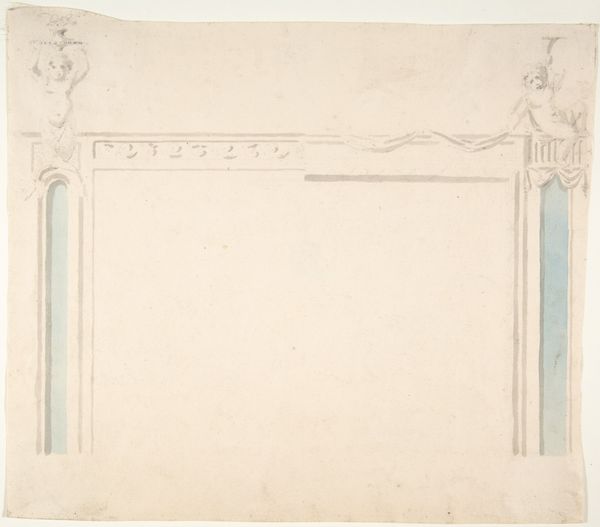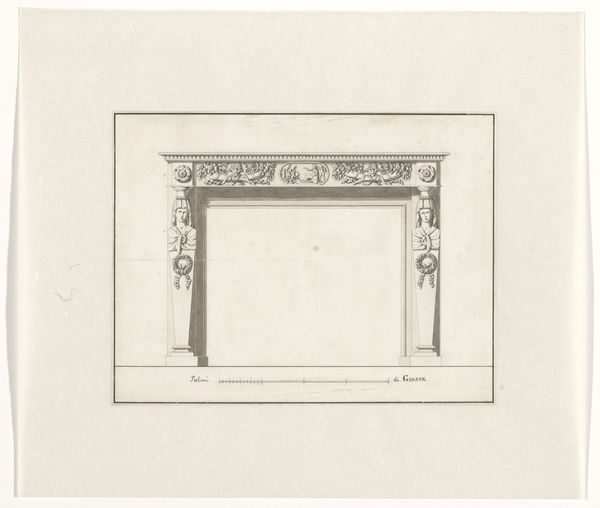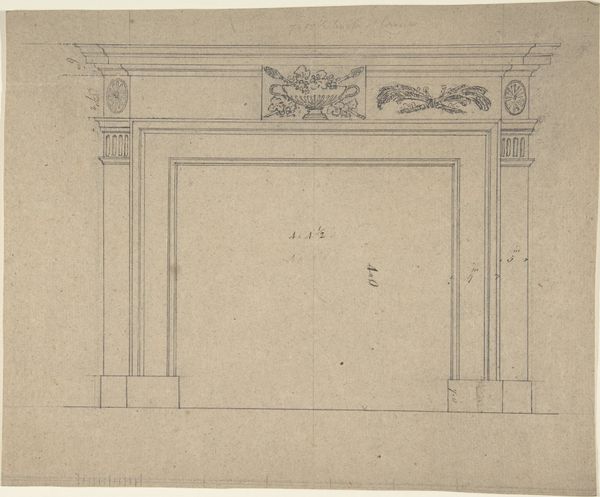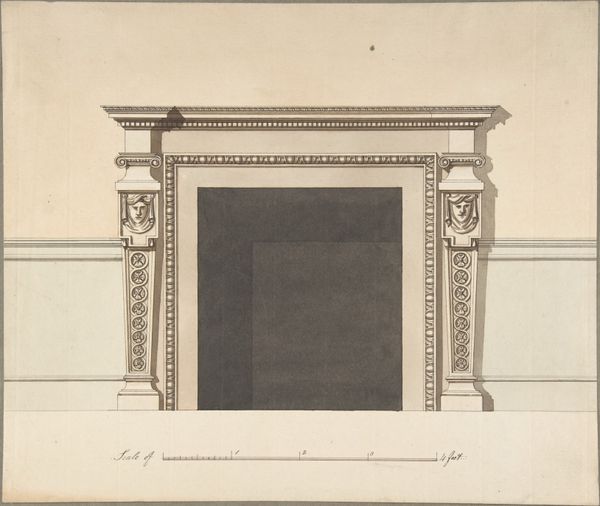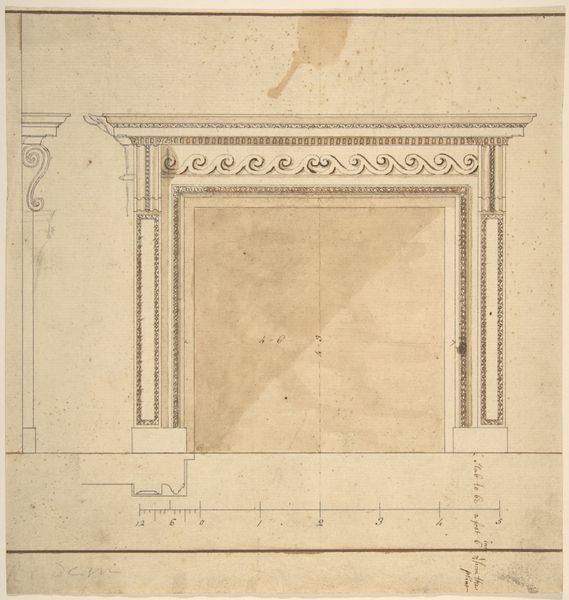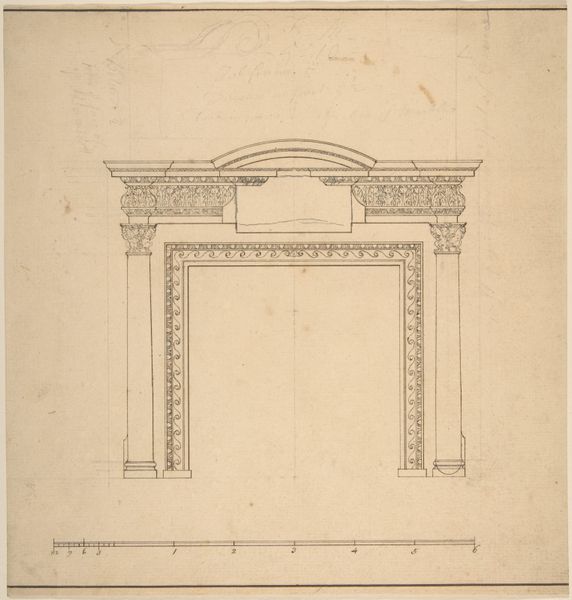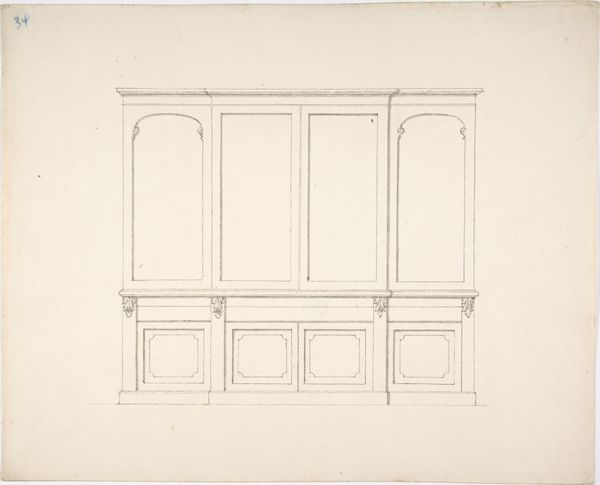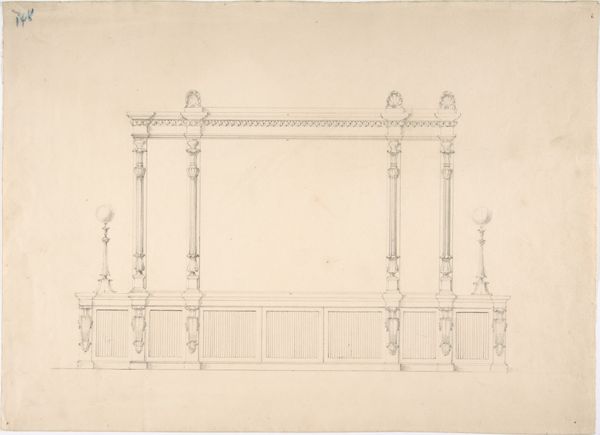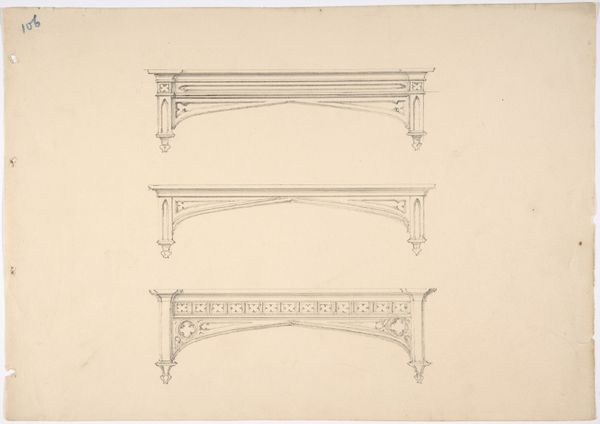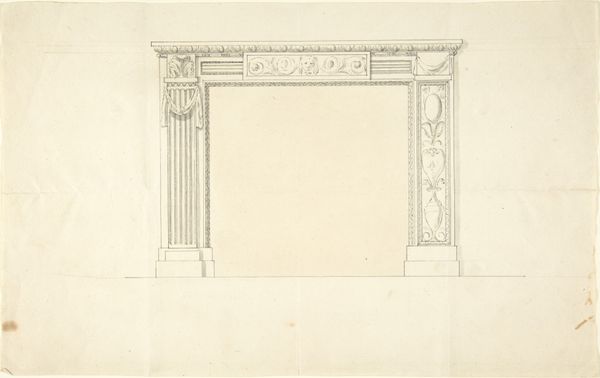
drawing, print, pencil, architecture
#
drawing
#
neoclacissism
# print
#
landscape
#
form
#
geometric
#
pencil
#
academic-art
#
architecture
Dimensions: sheet: 10 1/4 x 15 7/8 in. (26 x 40.3 cm)
Copyright: Public Domain
Editor: So this is "Design for a fireplace," a drawing from 1827 by Thomas Heiton, currently held at the Metropolitan Museum of Art. The geometric and symmetric qualities make me think of architectural drawings. What strikes you most about it? Curator: The design embodies the Neoclassical aesthetic of the period, harking back to ancient Greece and Rome. But what interests me is to question why there was such an appeal to these specific historical periods in the early 19th century, and for whom was it made? What social class was likely to incorporate this design into their homes, and what message would it send? Editor: It does seem like this design speaks of wealth, maybe even power. Do you see this interest in the past as an intentional expression, a kind of statement? Curator: Absolutely. Neoclassicism was often used by dominant social groups to create a sense of legitimacy and authority. Think about it: Emulating the art and architecture of powerful, established civilizations like Greece and Rome allowed rising elites to visually connect themselves to that legacy. Consider the political climate, and who controlled the spaces where designs like this were implemented. Whose values were reflected in that design? Editor: So the fireplace becomes more than just a fireplace—it’s a symbol of social standing. Curator: Precisely. And even the specific motifs used – the symmetry, the geometric forms, the references to classical orders – were ways of visually encoding specific ideologies. Editor: I guess I had only been considering form. I hadn't thought as deeply about what the forms represented in terms of social power structures. Curator: Looking closely at designs like these forces us to question who benefited from such an aesthetic, and what messages were subtly being communicated about class, status, and even gender roles within these designed environments. It opens a fascinating avenue for considering art's role in shaping our social reality.
Comments
No comments
Be the first to comment and join the conversation on the ultimate creative platform.
